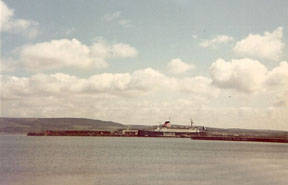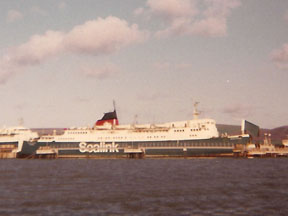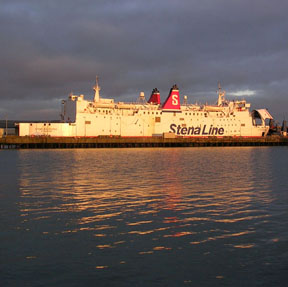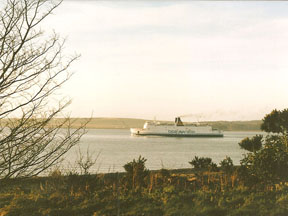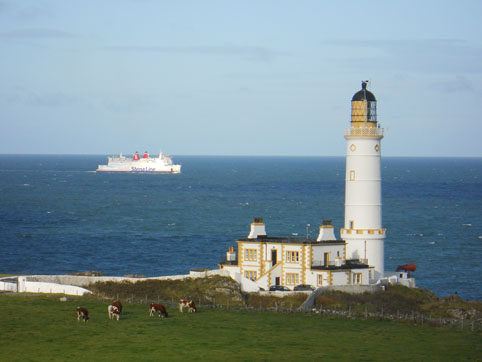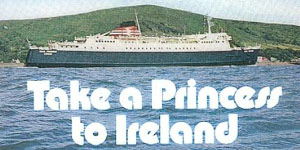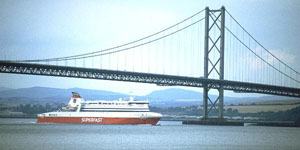| Superfast Sisters Exterior |
||
 |
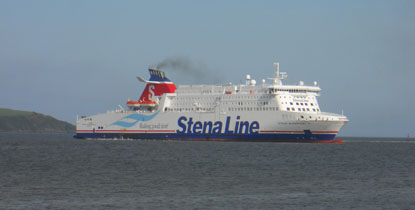 |
|
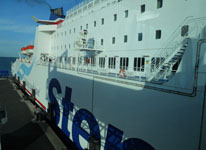 |
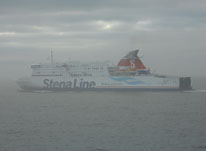 |
|
Thriving Town
Tucked away in South West Scotland, Stranraer has been served by a ferry service for nearly 140 years. The original service operated to Larne in Northern Ireland, but was switched to Belfast in 1995. The Scottish port always bustled with passengers bound for the ferry particularly on busy summer Saturdays. In recent years however, the town has gradually become deserted as only one or two daytime sailings operated from the port.
| Quick Facts |
Investment Stena who succeeded British Rail first mooted a move further up Loch Ryan over ten years ago. As a result the focus on Stranraer harbour visibly decreased with the terminal building long past its sell-by date. Eventually with some assistance from the Scottish Government Stena relocated to their new port just north of Cairnryan in November 2011. Stena had already moved to the Victoria Terminal 4 in Belfast in 2008 and because of its convenient location the crossing time has reduced ironically to the original Stranraer/Larne duration of just over two hours. To coincide with the relocation to Cairnryan Stena has chartered two vessels from Tallink, which had originally started life with Superfast. They have retained their names with "Stena" inserted before them, and have been converted from night boats to day boats by the removal of a large number of cabins. Their interiors have been refurbished to very high standard, providing a level of comfort not seen before on the route. |
|
|
Future
Stranraer harbour now lies derelict. The infamous terminal building has been flattened and the road up to the pier straightened (after 30 years of chicanes). Although the train from Glasgow still serves the station, passengers are advised to use a connecting coach service from Ayr to Cairnryan. There are hopes that the port area will be redeveloped but for now there are just vast stretches of decaying tarmac. The future of the route now seems secure. The future of the town is another matter altogether.
| Superfast Sisters Interior |
||
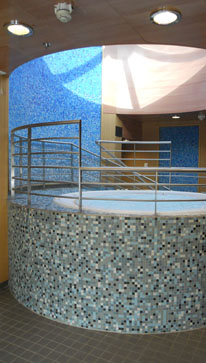 |
 |
|
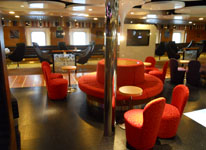 |
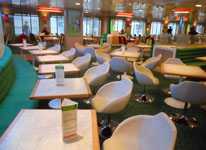 |
|
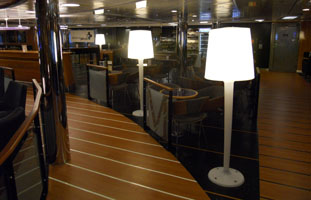 |
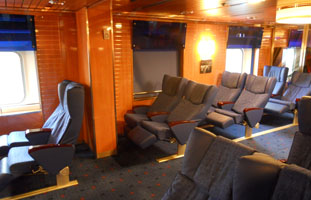 |
The interiors of the Superfast sisters are quite stunning especially in comparison to the spartan and sterile accommodation on the recently introduced P&O sisters at Dover. Gentle curves, subdued lighting and comfortable seating are the order of the day.
Top left: Bring your swimming gear and you can relax in the Pure Nordic Spa
Top right: In common with other refurbishments Bar 55 can be found at the front
Middle: The slightly wacky Pod lounge
Middle right: Taste restaurant serves decent fast food on the short crossing
Lower left: Barista coffee - big lights, small tables
Lower right: Truckers seating
